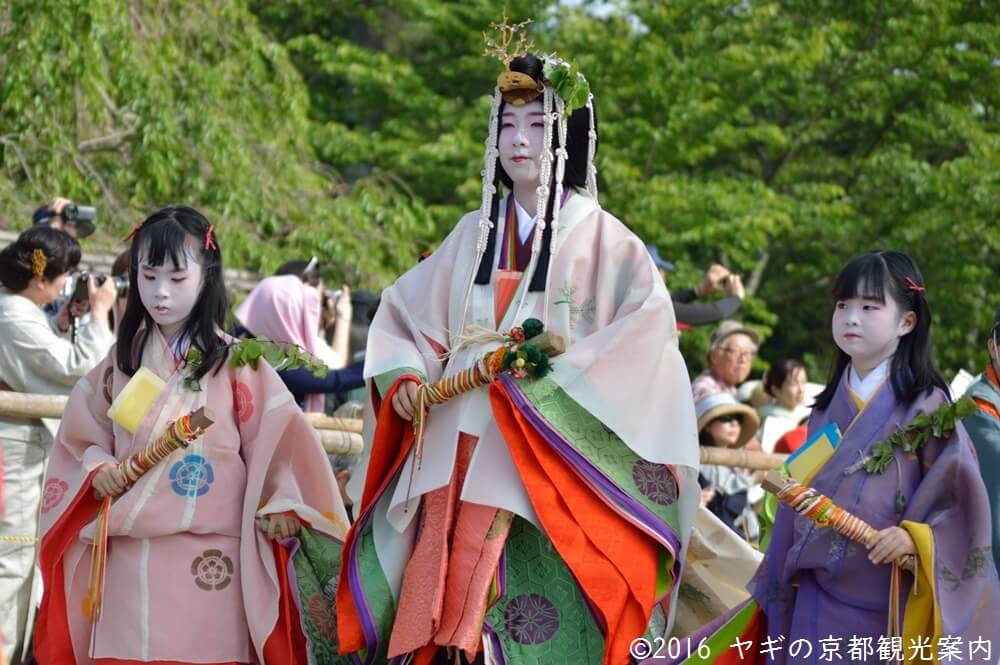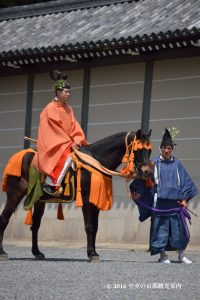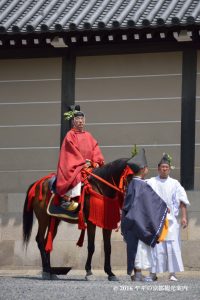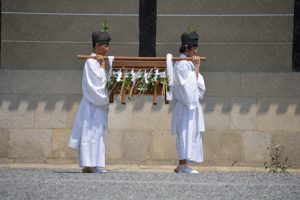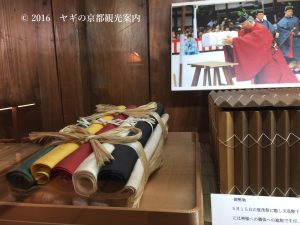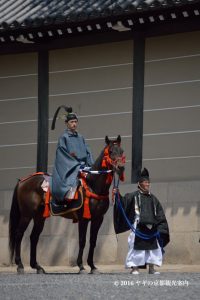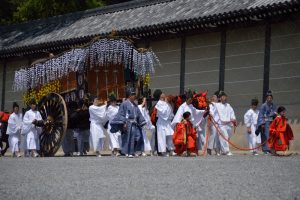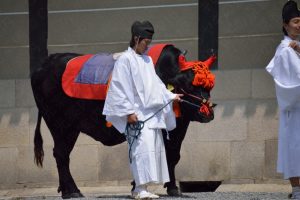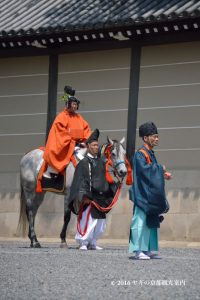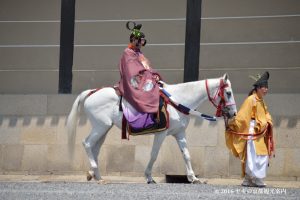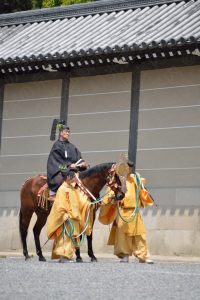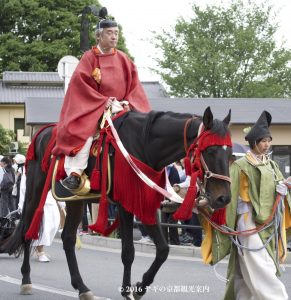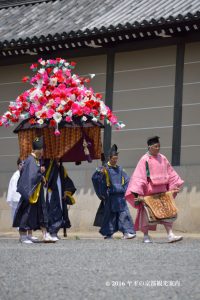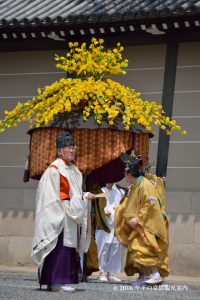THE GIST OF THIS ARTICLE
- Page 1 Schedule, What is Aoi Matsuri?
- Page 2 Saioh Dai 斎王代
- Page 3 Parade1: Chokushidai Retsu 勅使代行列
- Page 4 Parade2: Saiohdai Retsu 斎王代列
- Page 5 Shato no Gi 社頭の儀
- Page 6 Ceremonies prior to Aoi Matsuri
- Page 7 How to see the parade?
The following is the contents of this article.
Events of Aoi matsuri festival 路頭の儀と社頭の儀
Roto no gi (Parade)
The most famous thing in Aoi Matusuri festival. About 500 people, in the garments of Heian period, march from Kyoto Imperial Palace to Kamigamo shrine by way of Shimnogamo shrine. It takes nearly 5 hours.
Sya to no gi (Rituals at Shines)
The rituals are held when the parade of Aoi matsuri festival arrives at both Shimogamo and Kamigamo shrine.
Roto no Gi 路頭の儀
Overview
First of all, enjoy the video. Roto no gi parade consists of two units. One is Konoe tsukaidai retsu and the other is Saioh dai retsu.
Konoe tsukaidai retsu is a parade of Konoe tsukai, a.k.a. Chokushi, a messenger of the Emperor. He visits both Shimogamo and Kamigamo shrine to pray peace and prosperity of Japanese people and their country.
On the other hand, Saioh dai retsu is a parade of Saioh dai.
近衛使代列/Konoe tsukai dai retsu
肝煎/Kimoiri
Kimoiri is the man in white and purple outfits. He leads the parade.
乗尻/Norijiri
They are the jockeys of “Kamo kurabe”, the horse race ritual held prior to Aoi matsuri in Kamigamo shrine.
検非違使志/Kebi-ishi no sakan
He is a kind of police officer.
検非違使尉/Kebi-ishi no jyo
He is a chief police officer.in charge of the security in “Heian-kyo”, the ancient Kyoto city. They attend the parade because the Imperial palace is located there.
山城使/Yamashiro no Etsukai
He is an officer in charge of the security of the outside of the ancient Kyoto city.
He attends the parade because Kamigamo and Shimogamo shrines are located outside of the city.
御幣櫃/Gohei hitsu
Inside of the box they carry, there are roles of cloth which the emperor sends to Kamigamo and Shimogamo shrines. The cloth is called “Gohei motsu”.
These roles are actual Goheimotsu. They are sheets of cloth. In ancient time, cloth were precious.
内蔵寮史生/Kuraryo no shiyo
He is an officer in charge of the Goheimotsu.
御馬/Ouma (Horse)
They ride the “Oumas” to let the Deity of Kamigamo and Shimogamo shrines see them galloping.
近衛使代(勅使)の牛車/Gissya for Konoe tsukai dai
A wagon pulled by an ox. This “Gissya” is the hugest one for retired emperors or high ranked officials. It was ornamented with flowers in Aoi matsuri festival.
舞人/Maiudo
There are 6 “Maiudos” in the parade. They dance “Azuma asobi” in front of the Deity.
陪従/Beijyu
We have 7 “Beijyus” in the parade. They are musicians to play “Gagaku”, the traditional Japanese music for the Deity.
近衛使代/Konoe-tsukai-dai
He is the most important figure in Aoi matsuri festival.
He is a messenger of the emperor to the Deity.
内蔵使/kurazukai
He has a small bag in the breast. It contains a letter from the emperor. Knoe-tsukai-dai reads it out to the Deity.
風流傘/Furyu-gasa
These umbrellas are decolated with flowers to make the parade graceful.
ヤギの京都観光案内/KYOTO GOAT BLOGをもっと見る
購読すると最新の投稿がメールで送信されます。

